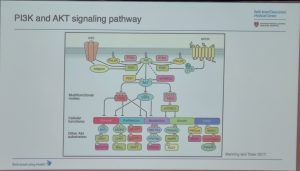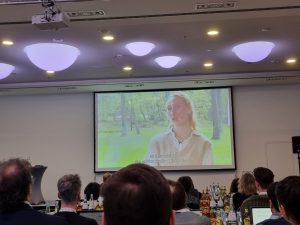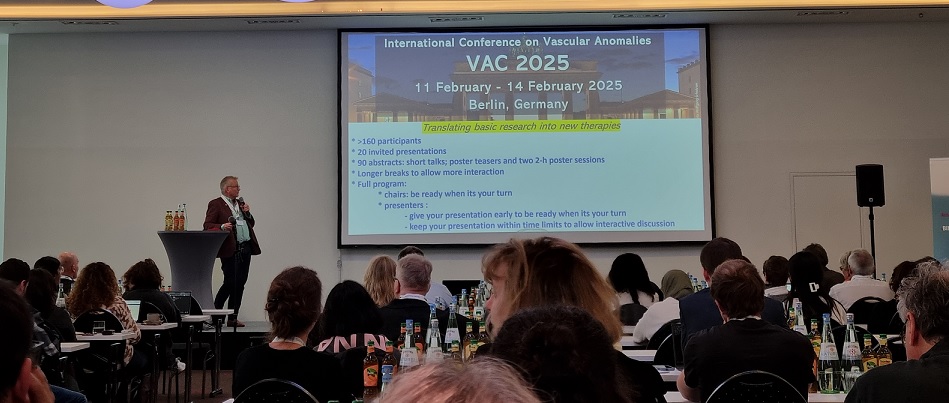In 2023, the ‘International Conference on Vascular Anomalies’ (VAC) was organized. In 2025, this conference was held again, this time in Berlin from February 11 to 14. Around 170 physicians, professors, researchers, and various patient organizations participated.
The aim of the conference is to share the latest developments in research (basic, translational, and clinical) to accelerate the development of new treatment strategies for vascular malformations.
 As patient organizations, we met with two pharmaceutical companies.
As patient organizations, we met with two pharmaceutical companies.
One company has developed a new medication for people with PIK3CA gene mutations, which has fewer side effects than sirolimus and alpelisib. This medication is currently in a clinical trial (testing in humans) in the USA.
The other company has managed to replace a medication that is normally taken as a pill (orally) with a gel that can be applied directly to the vascular malformation.
The conference was opened with a presentation by Petra Bogards. She is a Patient Advocate and co-chair of our VASCA working group within VASCERN (European Reference Network for Vascular Malformations).
VAC 2025 Patient Role and Engagement

Ana Angulo-Urarte presented ‘exploring the role of PIK3CA variants in vascular malformations – a combined molecular and experimental modeling strategy’.
Emmanuel Seront ‘new promising ways for sirolimus treatment – from continuous to intermittent administration of sirolimus in slow-flow vascular malformations’.
Maroeska te Loo ‘venous malformations and identifying the patient at risk for thrombosis – what do we have’.
Emmanuel Seront ‘improving targeted therapies in complex lymphatic anomaly – two cases of synergistic efficacy of traumetinib and sirolimus’.
Whitney Eng ‘real-world experience using alpelisib in 26 vascular anomaly patients treated at a single institution’.
Julien Coulie ‘Somatic KRAS variants in limb overgrowth with capillary malformation and fast-flow, with or without slow-flow lesions – a distinct entity named KROS’.
Laurence Boon ‘Clinical use of medicines in fast-flow vascular malformations’.
Summaries of as many of these presentations as possible are being published on our website.
Once again, we also had a stand at the event.

